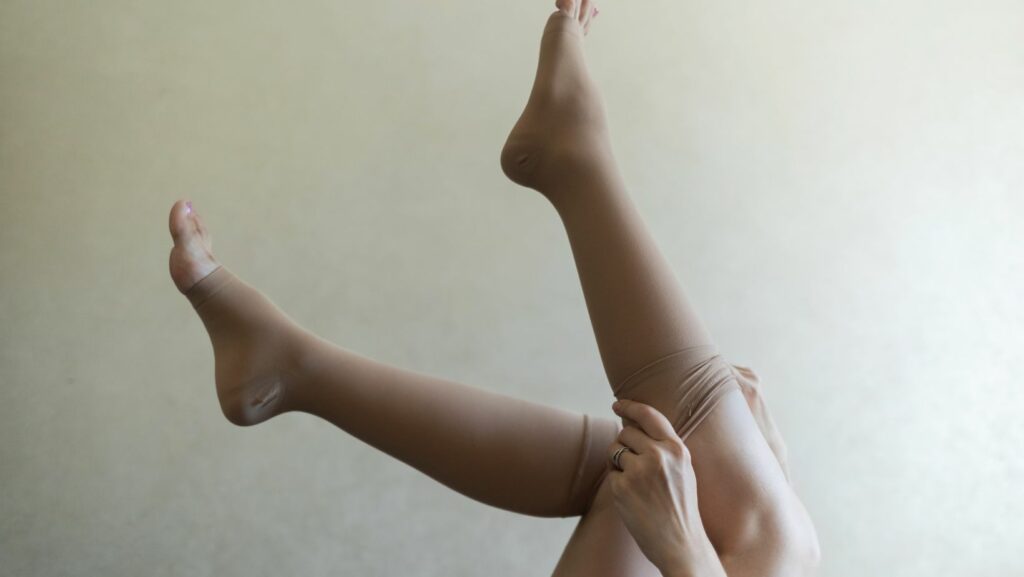It’s essential to continually seek effective solutions to your health and fitness challenges, and compression wear stands out as a viable remedy for several issues. If compression wear is in your toolbox, you may wonder if it’s safe and beneficial to use it daily.
This guide examines the science behind compression socks like those available from Copper Fit, their potential benefits, and any associated risks to help you make an informed decision about incorporating them into your daily routine. Read on to learn how to add compression wear to your routine safely.
Compression Wear — What, Why, and When?
Compression wear might sound like just another fitness trend, but its benefits are supported by both medical and sports professionals. Compression socks are specifically designed garments that apply controlled pressure to the legs, supporting healthy circulation and soothing discomfort caused by poor blood flow.
Their effectiveness comes from graduated compression, firmest at the ankle and gradually loosening toward the calf or thigh. This pressure pattern helps support venous return, manage swelling, and soothe fatigue, especially for those who spend long hours standing or sitting.
Athletes often use compression socks to combat muscle soreness and support recovery after intense workouts. Likewise, people with sedentary office jobs or frequent travelers find them helpful for preventing issues such as varicose veins and Deep Vein Thrombosis (DVT).
There’s no strict rule about when to wear compression socks; it depends on individual needs. Some prefer them during exercise, others on long flights, and many integrate them into their daily routine for consistent comfort and support.
What Are the Different Types of Compression Wear?
Compression wear comes in a variety of forms. The most common and widely used type is compression socks or stockings, which apply graduated pressure to the lower legs. These are popular among healthcare professionals, frequent travelers, athletes, and individuals who spend long periods standing or sitting.
Compression sleeves are another common option, designed for the arms or calves. They are often used in sports and rehabilitation settings to help stabilize muscles, support oxygen delivery, and maintain recovery time after exercise. Unlike full socks, sleeves leave the feet or hands uncovered, which can make them more comfortable for certain activities.
For those recovering from medical conditions or surgeries, medical-grade compression garments offer targeted support. These include full-leg stockings, compression tights, or body garments that help manage conditions like lymphedema or post-surgical swelling. They are available in varying compression levels, measured in millimeters of mercury (mmHg), and should be selected under the guidance of a healthcare provider to ensure proper fit and effectiveness.
Finally, compression shorts, leggings, and tops are often worn by athletes or fitness enthusiasts for muscle support during workouts. These garments can help reduce muscle vibration and fatigue, support alignment, and keep the body warm during physical activity. While they’re not typically used for medical purposes, they can enhance comfort and performance, especially in endurance sports.
Can I Use Compression Socks Every Day?

Compression socks play an important role in promoting healthy circulation and managing swelling or discomfort, especially for people who spend long hours on their feet or sitting at a desk. They provide steady support that helps relieve pressure in the legs, making them useful for both work and everyday comfort.
They’re equally beneficial for those with active lifestyles. Runners, weightlifters, and fitness enthusiasts often wear compression socks to combat muscle fatigue, support recovery, and improve overall performance during and after workouts. Consistent use can help maintain comfort and endurance throughout demanding physical routines.
While compression socks can be worn daily, it’s important to prioritize personal comfort and proper fit. If you’re unsure about how often to wear them or which level of compression is right for you, consult a healthcare professional.
People with arterial disease, skin infections, or certain dermatological conditions should avoid compression socks unless approved by a healthcare professional. Consulting your doctor before adding them to your daily routine ensures the level of compression and duration of wear are safe and appropriate for your specific needs.
Adding Compression Socks to Your Routine Safely
Whether you’re an office worker spending most of the day static, an athlete seeking faster recovery times, or someone living with a circulation disorder, compression socks have something to offer.
But as with many healthcare interventions, it’s wise to remember that one size doesn’t fit all. It’s crucial to consult with a healthcare provider before making any changes in your daily habits and to consider your personal comfort above all. With the potential benefits, it could be worth stepping into a pair of compression socks and taking them for a test run.
So, can you use compression socks every day? It largely depends on your individual circumstances and health status. Consult a healthcare professional for personalized advice. Undoubtedly, the world of compression socks is worth exploring, and they might just prove to be the game-changer you need in your daily routine.
